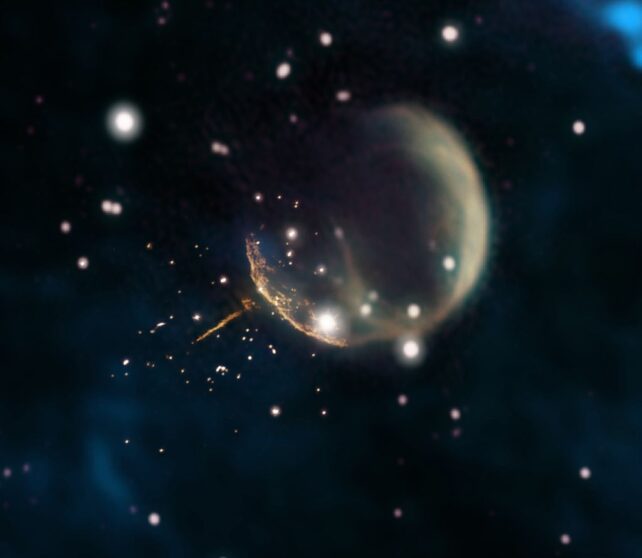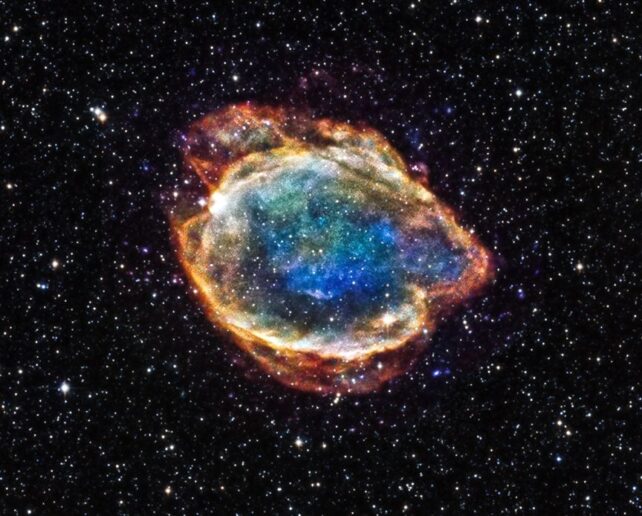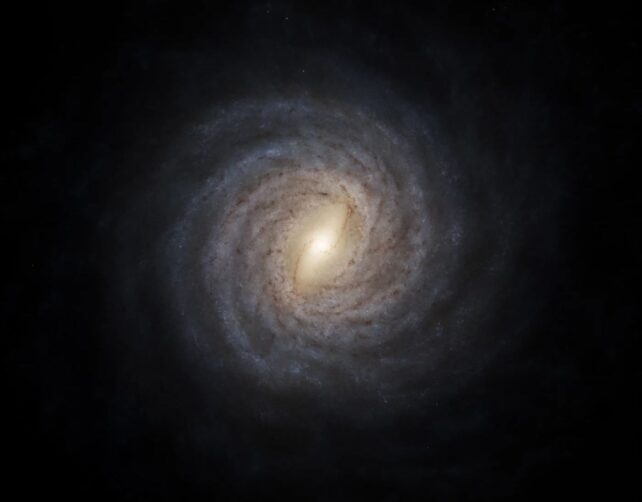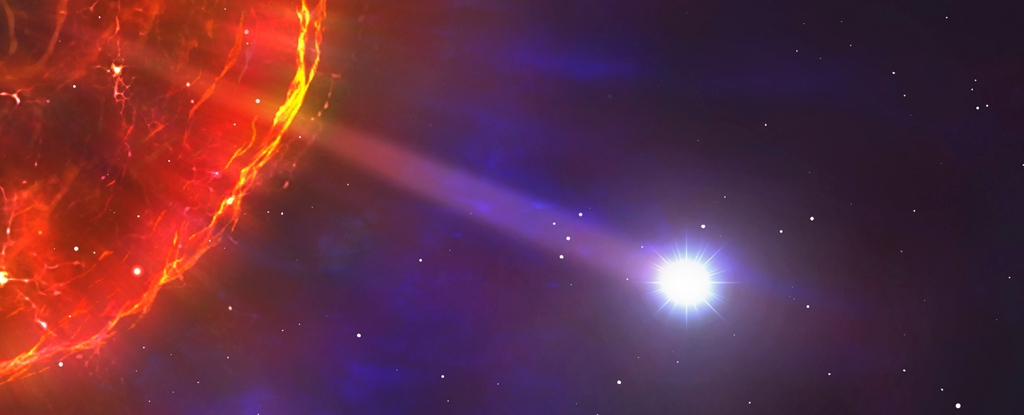Products You May Like
The new discovery of six more runaway stars in the Milky Way has landed the fastest object of this type yet detected in the galaxy.
In fact, two of the stars are record-breakers, with heliocentric radial velocities faster than any ever seen for runaway stars. The star J1235 clocks in at 1,694 kilometers (1,053 miles) per second; and J0927 at a jaw-dropping 2,285 kilometers (1,420 miles) per second.
But four of the newly measured objects are what is known as hypervelocity stars, traveling at speeds that exceed the escape velocity of the Milky Way; and all four, according to a team led by astrophysicist Kareem El-Badry of Harvard-Smithsonian Center for Astrophysics, are likely the result of spectacular Type Ia supernovae – the “standard candles” by which we measure the Universe.
This, they say, has allowed for a new calculation of the rate at which these stars are born, and found that it is consistent with the estimated rate of Type Ia supernovae. Their findings have been detailed in a paper submitted to the Open Journal of Astrophysics, and available on preprint server arXiv.
“A significant population of fainter low-mass runaways may still await discovery,” the researchers write.

Any time a star explodes, the force of the detonation can yeet whatever is left off into space at high speeds. Hypervelocity stars are thought to be the product of a special type of supernova that gives the star an even bigger kick than usual, what is known as the dynamically driven double-degenerate double-detonation, or D6, supernova.
This is a scenario to explain what happens during a Type Ia supernova.
You need to start with a pair of white dwarf stars in a binary system. These are the remnant cores of low-mass stars, up to about eight times the mass of the Sun, that have run out of fusion material, ejected most of their mass, and collapsed into a dense core shining brightly with residual heat. Such objects are known as degenerate stars.
A white dwarf has a mass limit, known as the Chandrasekhar limit, of around 1.4 times that of the Sun. Above that limit, the star becomes unstable, exploding in a Type Ia supernova.
To get to that critical mass, a white dwarf has to be in a close enough binary system with another star that it gravitationally pulls matter from its companion, growing more massive over time.
What happens depends on the type of the companion star. If the white dwarf is pulling off hydrogen, it results in a classical nova; you can read about how that happens here.
However, if the companion is a white dwarf with a significant surface layer of helium, the cannibal star will siphon off that, instead.
This creates a more massive helium layer on the surface of the donor star, which, when it reaches high enough pressure and heat, will start to rapidly fuse into carbon.
This triggers a thermonuclear explosion, similar to what happens with hydrogen in the classical nova.

But the helium detonation goes a step further: its shockwave triggers a second detonation in the core of the white dwarf, producing a colossal kaboom. That’s the double-degenerate double-detonation, and it is thought to send the donor star – the one that didn’t just explode twice like some massive overachiever – positively flying.
The speeds of these hypervelocity stars are blistering, in excess of 1,000 kilometers per second. Given that something needs to be traveling at 550 kilometers per second to leave the Milky Way, hypervelocity stars are destined for intergalactic space.
But we don’t know how many of them are out there or how often a Type Ia supernova produces a hypervelocity star. So, El-Badry and his colleagues went digging in data from the Gaia survey, an ongoing project to map the Milky Way with the highest precision ever, including the proper motions of the stars as they move around the galaxy.
They found 4 previously unknown hypervelocity stars with a D6 origin. That doesn’t sound like many, but combined with 10 previously identified hypervelocity stars given a supernova kick, it allows for a much more precise calculation of the actual numbers of these things that are out there. And there should be more than a few.
In fact, our galaxy should have a few speeding stars that have come from other galaxies.
“If a significant fraction of Type Ia supernovae produce a D6 star, the Galaxy has likely launched more than 10 million of them into intergalactic space,” the researchers write.
“An interesting corollary is that there should be large numbers of faint, nearby D6 stars launched from galaxies all throughout the local volume passing through the Solar neighborhood.”

There are faster stars in the Milky Way, but their contexts are a little different. Stars orbiting the supermassive black hole in the center of the galaxy can reach incredible speeds; the fastest moves at an astonishing 24,000 kilometers per second as it swoops in close to the black hole on its long elliptical orbit.
However, they’re gravitationally bound in their orbits, and are not going to leave the galaxy any time soon, unless a wild three-body interaction appears to give them a kick.
Previously, the fastest known runaway star was a D6 white dwarf binary with a velocity of around 2,200 kilometers per second; its heliocentric radial velocity was measured at 1,200 kilometers per second. That’s the velocity as it appears to us, the observers. J0927 and J1235 could have, the researchers calculated, total velocities of 2,753 and 2,670 kilometers per hour, respectively.
There may be even faster stars out there. We tend to only find the brightest ones, suggesting that there are a lot we are missing. What the new discovery gives us is a significant number of new data points for figuring out where they are, and how to find them.
“There is now a sizable population of hypervelocity stars associated with thermonuclear supernovae,” the researchers write.
“Modeling this population will ultimately make it possible to infer the formation rate of thermonuclear runaways and ultimately, the fraction of Type Ia supernovae formed through the double-degenerate channel.
“Our estimate of the birth rate of D6 stars is consistent with a scenario in which most Type Ia supernovae produce a hypervelocity runaway white dwarf, but the observed population is dominated by the most massive and brightest runaways. Models for the thermal evolution of D6 stars are needed for more robust estimates of their birth rate.”
The research has been submitted to the Open Journal of Astrophysics, and is available on arXiv.
